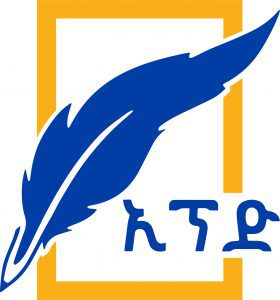
It is apparent that for Egypt and Sudan the binding agreement is just the enforcement of particularly the 1959 unilateral agreement which is all about the share of whole Nile water between Egypt and Sudan alone.
That is the main agenda behind the so called binding agreement that the two nations want to achieve. So the binding agreement propagated by Egypt and Sudan and their supporters is something suicidal and vague to Ethiopia that it cannot accept forever.
It should also be noted that there is no international law that can force Ethiopia to accept. Therefore, Ethiopia has to continue its move towards completing the construction of the dam without interruption.
Now is a time to look for better options which may benefit all including Ethiopia. The only binding agreement is to work hard for the increase of fresh water in the Nile Basin by planning green economy and implementing environmental protection through dialogue and scientific means and work for mutual benefit, according to Tilahun Erduno (Dr. Ir.)
The two governments will continue until the people of Egypt and Sudan know that the Grand Ethiopian Renaissance Dam (GERD) and similar hydroelectric dam (HEP) projects have no as such negative impact on their life.
The governments of Egypt and Sudan together with their people will observe that the water reserved in the dam will operate the turbine, moderate the flow of water in Nile Basin, rescue them from flooding and reach to its final destiny Cairo and Mediterranean Sea without interruption.
Abbay Dam will allow for regulated and sustainable minimum flow levels in the dry season. It will regulate the steady water flow throughout the year and it will avoid unexpected flooding to downstream countries. Regarding energy and power production, the dam will allow underperforming downstream hydropower schemes to perform more effectively as there will be more reliable sediment free, and regular availability of water throughout the year. Indeed, the dam will benefit Sudan and Egypt immensely by delivering steady water flow throughout the year. Besides reducing floods in the downstream countries, projects like GERD are also vital for connecting the region with electric grid, as obtained from research outcomes.
It is obvious that since the laying of the cornerstone for the construction of the Abbay Dam, Ethiopians residing at home and abroad have been partaking in the construction of the dam more than ever before. Following their active involvement and the commitment of the federal government of Ethiopia, the colossal project is going to see the light of day.
On the heels of their active participation in the construction of the dam, the whole thing has been heading in the right direction.
The Office of the National Council for the Coordination of Public Participation to the Construction of the Abbay Dam Director General Aregawi Berhie (PhD) told the Ethiopian Press Agency (EPA) that the public supports the building of the iconic dam financially, professionally, and in other ways.
While some 10 million Birr has been secured from the public to the iconic dam in the SMS scheme in each month, the non-financial support also remains strong. Noting the boost in the public-government coordination for the execution of the Abbay Dam, Aregawi (PhD) indicated that continued public support to the iconic dam showcases how Ethiopians are really eager to support developmental projects. The project is nearing to the completion owing to the robust partnership of the government and all segments of the society.
Since Ethiopia is Africa’s most mountainous country, every drop of its rain water rushes outside the country. Furthermore, Ethiopia is a land locked country sharing boundary with a wide spectrum of independent states. On the other hand, Egypt is a country utilizing the Nile water alone and more than 60% of its territory is bounded with Mediterranean, Red Sea and Suez Canal waters. What is more, Egypt is known for its abundant underground water and many lakes.
The approach used to build the Grand Ethiopian Renaissance Dam is a big lesson that serves as a model for African nations grappling with poverty, Deputy Prime Minister Temesgen Tiruneh said, as information obtained from a local media.
The deputy premier made the above remark at the commemoration of the 13th Anniversary of the Grand Ethiopian Renaissance Dam held in Addis Ababa. He pointed out that despite the enormous challenges Ethiopia faced, it was able to safeguard its rights to conceive, design, finance, and construct the dam. “This approach serves as a pioneering and exemplary model for nations across our continent grappling with poverty,” Temesgen stressed. The anniversary celebrated under the theme: “Together We Can” featured a series of events, including panel discussions and a photo exhibition.
Deputy PM Temesgen Tiruneh on the occasion lauded the unified efforts of the government and the public in overcoming significant challenges over the past thirteen years.
The construction of GERD has now reached an impressive 95.8 percent milestone, and Ethiopia resolutely upheld the principle of African Solutions to African Problems on the global stage, he recalled.
Editor’s Note: The views entertained in this article do not necessarily reflect the stance of The Ethiopian Herald
BY ADDISALEM MULAT
THE ETHIOPIAN HERALD THURSDAY 4 APRIL 2024




